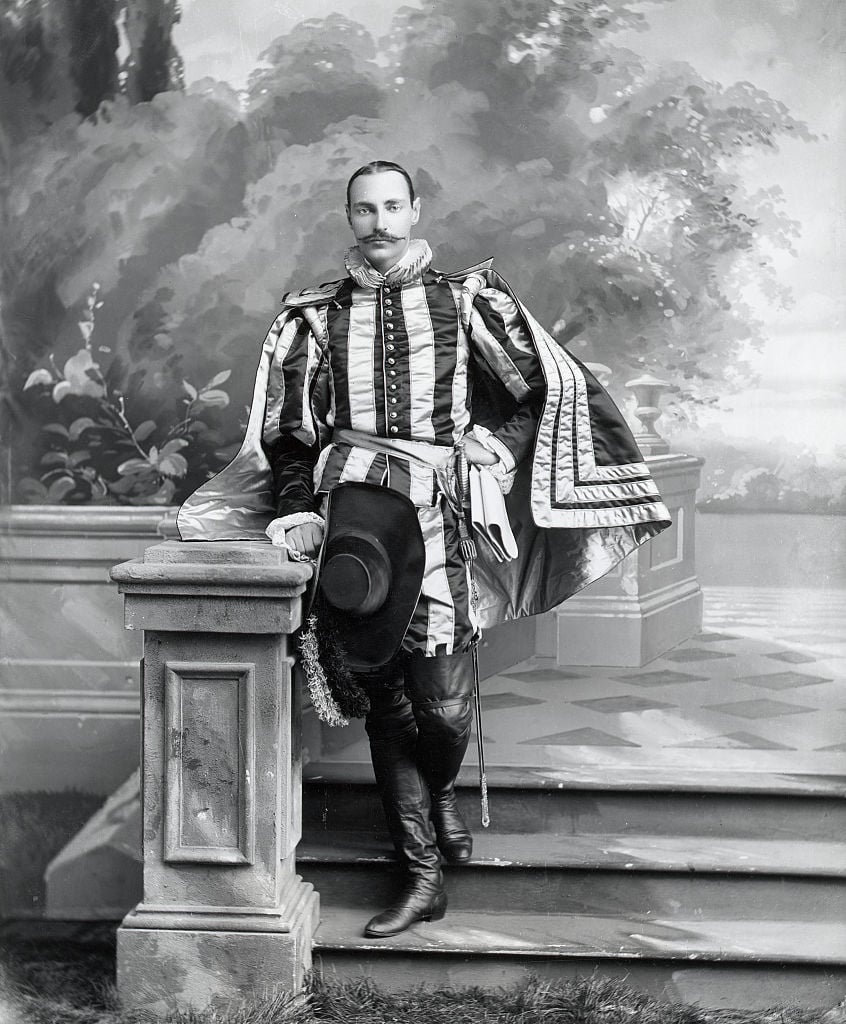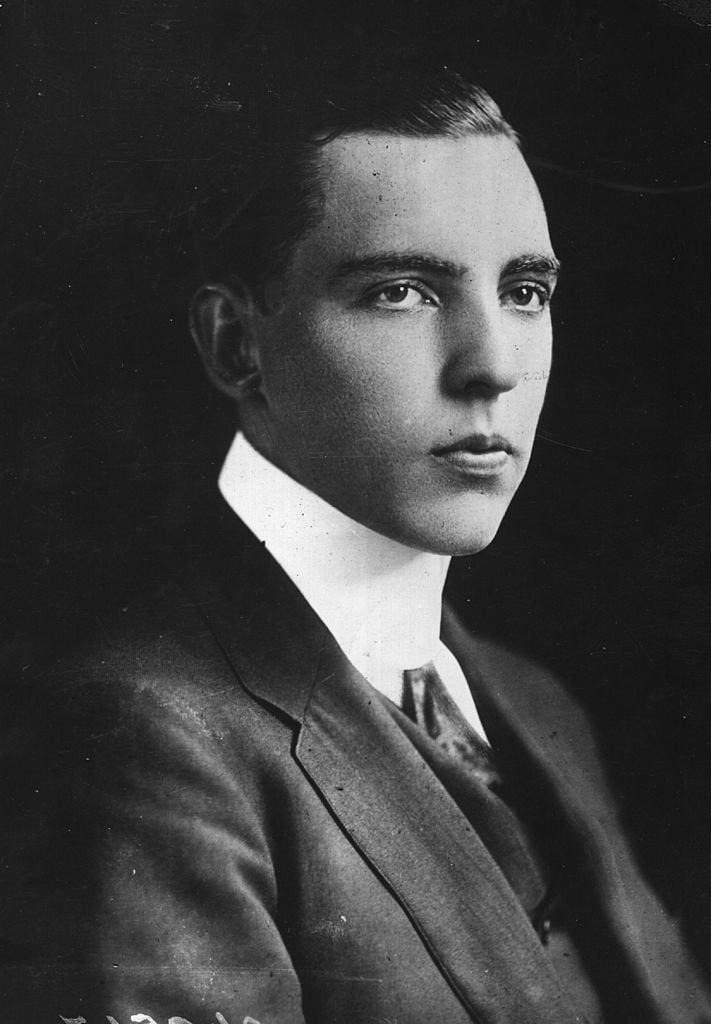Vincent Astor was just 20 years old and an undergraduate at Harvard when his father John Jacob Astor IV went down with the Titanic. At that moment, Vincent inherited what was the biggest personal fortune on earth at that time.
When the Titanic went down in 1912, his stepmother Madeleine survived. His father's body was retrieved from the Atlantic Ocean and transported back to New York. The gold watch that John Jacob Astor kept in his pocket had been secured by his life jacket and it was presented to his only son. Vincent carried it in his pocket every day for the rest of his life.
John Jacob Astor IV was the richest person in the world at the time of his death on the Titanic in 1912. He was the great-grandson of John Jacob Astor I, who made his first million trading furs from Canada to wealthy women in New York City. Astor I then used his money to buy up vast quantities of real estate around New York, especially in what we now call Manhattan.
At the time of Astor I's death in 1848, he left behind a fortune of $20 million. $20 million today would be big fortune. We're talking about $20 million in 1848. At You can't even really use an inflation calculator to understand how much money that was worth in today's dollars. To understand that amount of money in today's dollars, historians compare its value as a portion of gross domestic product. When comparing to its portion of America's Gross Domestic Product, Astor I's fortune is worth the modern equivalent of $121 BILLION dollars. That fortune made him the 14th richest human of all time and the fifth richest American ever.
John Jacob Astor IV his son had been exceptionally close. A biography of the Astors by Justin Kaplan called "When the Astors Owned New York" said:
"Vincent adored him and was adored in return… Jack spent much of his time away from Ava in the company of their son… he was happiest sailing with Vincent on board the steam yacht he had inherited from his pleasure-loving father."
Inheriting a Massive Fortune
When the Titanic sank, everything in Vincent Astor's life changed. Overnight he went from an obscure undergraduate at Harvard to being one of the richest humans on the planet.
John Jacob Astor was worth $85 million in 1912 at the time of his death. That's the same as around $2.3 billion today.

John Jacob Astor IV attends the Bradley Martin Ball.
According to terms of John Jacob Astor's will, Vincent received $69 million in cash. That's the same as $1.9 billion today. He also inherited a large swath of real estate in New York City, and the elegant St. Regis Hotel. The hotel had been opened by Vincent's father in 1904 and was considered the crown jewel of his assets and the proudest accomplishment of his career. When Vincent inherited the St. Regis it was the nexus of New York society life and was well on its way to transforming the neighborhood into the best shopping area in the city.
Perhaps overwhelmed with the responsibility, Vincent sold the St. Regis to Benjamin Duke but regained control of it in 1935 after Duke went into bankruptcy. He then set out to modernize the property and soon it became his proudest accomplishment.
Building His Own Empire
Real estate was in Vincent's blood. He owned several grand homes, including a 23-room penthouse at 120 East End Avenue and a Manhattan townhouse on East 80th Street that was built in 1927 was so large it ran the entire length of the lot all the way to 79th Street. It even had a subterranean garage.
Vincent transformed entire neighborhoods of New York City with his housing projects including a row of Victorian-era brownstones between 88th and 89th streets he converted into apartments and called "Poverty Row." Reportedly, Vincent envisioned young professionals and artists who hadn't made their fortunes yet inhabiting those homes. In 1935, he built eight five-story walk-up apartment buildings on the Lower East Side for poor and working families, many of them immigrants to live in.

Vincent Astor (Photo by Topical Press Agency/Getty Images)
Philanthropy
Vincent Astor had a strong social conscience – when his father died and he had to drop out of Harvard, he became determined to change his family's image from one of miserly slumlords to one dedicated to philanthropy. He sold off the Astor's slum housing holdings over time and reinvested the money in a large housing complex in the Bronx that had a big children's playground. In Harlem, he turned a plot of valuable real estate into another playground. Vincent also funded the American Red Cross, set up youth projects at New York Hospital, and built more playgrounds and youth centers across the city. He had been mistreated by his cold and uncaring mother and as a result, grew up to be very sensitive to the needs of children. Additionally, he didn't like how his family's real estate holdings had turned into slums and wanted to set things right.
Other Endeavors
In his free time, Vincent preferred to spend time sailing on his yacht, a new Nourmahal named after the boat he and his father had spent so many happy times together on. His 264-foot yacht had eleven staterooms, dining for 18, and a crew of 42. His yacht had a cruising range of 20,000 miles allowing him to travel the globe for months at a time. He was known for bringing home tortoises and other exotic animals from trips to the Galapagos Island and donating them to the Bronx Zoo. He ended up donating his beloved yacht to the U.S. Navy during World War II.
By the time he married his third wife, Brooke Astor in 1953, he had doubled the Astor family assets and started a number of successful businesses. One of these was merging Today magazine with the then defunct Newsweek to create a rival to Time – he then installed himself as chairman of the magazine in 1937 and ran it until his death in 1959.
Perhaps the greatest accomplishment of Vincent Astor's life, however, was the establishment of the Vincent Astor Foundation in 1948. The motto of his foundation was "the alleviation of human misery," which was how Vincent lived his life – undoing the unjust things he saw and creating opportunities for those less fortunate.
Death
Vincent Astor died on February 3, 1959, of a heart attack. He was 67. It wasn't his first heart attack. Eerily, he had his first heart attack while entering a theatre to see a screening of a film called "A Night to Remember." The movie was about the Titanic disaster.
Vincent managed to increase his fortune to approximately $200 million. That's the same as around $2 billion in today's dollars.
His widow Brooke Astor inherited $67 million (equal to $620 million today). A large portion of his estate also went to charity. Ultimately, between the amount of money given away at Vincent's death in 1959 and throughout Brooke's life, an enormous fortune went to charity through this family. Brooke lavished money to many charities – dance troupes, the New York Public Library, the Bronx Zoo, neighborhood literacy programs, the restoration of midtown Manhattan's Bryant Park, the installation of the Astor Court at the Metropolitan Museum of Art, and the Bedford-Stuyvesant Corporation. Brooke's portion of the Astor fortune was exhausted in 1997 after nearly three decades of generous philanthropy.
/2024/07/jack-astor.jpg)
/2017/11/thumb.jpg)
/2014/11/thun.jpg)
/2017/11/bezos.jpg)
/2021/07/GettyImages-3329759.jpg)
/2020/01/michael-bloomberg-1.jpg)
/2022/01/Richard-Kind.jpg)
/2013/09/reggie.jpg)
/2020/01/Bruce-Buffer.jpg)
:strip_exif()/2020/06/taylor.png)
/2021/02/Bill-Goldberg.jpg)
/2009/11/seal2.jpg)
/2019/11/Jerry-Jones-1.jpg)
/2012/10/LEON-SPINKS-1.jpg)
/2018/06/Marc-Marquez.jpg)
/2023/09/mary-austin.jpg)
/2014/08/GettyImages-516463040.jpg)
/2009/11/Brody-Jenner-1.jpg)
/2010/08/GettyImages-452103074-e1735941783850.jpg)
/2017/05/GettyImages-461023458.jpg)
/2012/07/Patrick-McEnroe.jpg)
/2012/07/Jon-Secada.jpg)
/2021/04/Sade.jpg)